|
Updated Feb. 17, 2022 Maybe tomorrow, I'll find what I call home, Until tomorrow, you know I'm free to roam. So if you want to join me for a while, Just grab your hat, come travel light, that's hobo style. -- excerpt from "Maybe Tomorrow", theme song from "The Littlest Hobo" -- The revival of The Littlest Hobo aired on Canadian television from 1979 to 1985 and continued in syndication throughout the rest of (and beyond) my childhood. I didn't like dogs much at the time so I thought that the show was by turns hokey, cheesy, lame...you name it (Macgyver was far more suited to my rarefied juvenile tastes and definitely not cheesy or hokey at all ;-)). Little did I realize that a similar situation was occurring simultaneously in the world of Nikon SLRs. Please allow me to introduce the hobo family of Nikon SLRs that was introduced in 1979 and discontinued in 1985 (coincidence or convergence? You be the judge ;-)). In March of 1979, Nikon first dared to venture into that most voracious and volatile sector of the SLR market: consumer SLRs. Oh, the horror for dyed-in-the-wool Nikonistas! Stooping to the level of Canon and their gauche, glass-reinforced polymer A-whatevers? Unthinkable! What was next...pitiful, plastic point & shoots?? (Now, now, just step back from that ledge and take a deep breath...that wouldn't happen for another four years ;-)) Where was the pride...the heritage...that was Nikon??? Well, blame America. After all, it was American dealers that were clamoring for a less expensive alternative to the FE. Add to that the age-old adversary of market saturation. Everything was going along swimmingly in Nikon's traditional professional and enthusiast slots. But those two sectors, while maintaining very loyal followings, were mature markets and overall growth was minimal. Entry-level SLRs were the happening thing. And so begat Nikon their first economy SLR, the aptly-labelled EM. The First of the Little Nikons Now, this was no small step for Nikon, as they themselves have said: With the completion of 4 different product lineups of F3, FE, FM, EM targeting different classes of users, our brand image changed from "Nikon, the manufacturer of high-end SLR cameras" to "Nikon, the all-round single-lens reflex (SLR) manufacturer". The 4 product lines were referred to as Super Nikon, Simple Nikon, Compact Nikon, and Little Nikon, respectively, and the product strategy was successfully established to accommodate a wide variety of consumers from beginners to professional photographers. That Nikon was still unsure of this pared-down paradigm and was taking baby steps was shown by their delay of the EM's release in Japan by a year to coincide with the introduction of the hotly-anticipated F3 in March 1980. Now this was noteworthy, as almost every new Japanese SLR at the time was always released first in Japan and then a bit later to the rest of the world. It seemed like Nikon was hoping to slide the EM on the F3's coattails in Japan because they were afraid of the reaction of the Japanese press and typical Nikonians to this change of brand identity. That was not a wholly-unrealistic fear. Right from the get go, there was a "red-haired stepchild" sort of mindset predominating in some quarters at Nikon itself towards the EM, its Series E lenses, and other E accessories. You can almost see certain Nikon executives holding their nose as they dared to defile their hallowed hallways with this consumer SLR swill. So it shouldn't have been a shock for that same attitude to be found outside Nikon among those who fancied themselves aficionados of the brand. Even the purportedly affectionate term "Little" Nikon had a backhanded undercurrent to it. The EM was truly the most "compact" Nikon, so why not give it that distinction over the not-precisely petite FM? "Little" implied that it wasn't a grown-up Nikon. Reinforcing this perception was the egregious title bestowed by Nikon on the EM as the "SLR Camera for Women". Sadly, such a misogynistic viewpoint was hardly confined to Nikon at that time (the other manufacturers at the time were no better at best, and some were even more blatant in their SLR sexism). Even if the smaller size of the EM did make it a better fit for the majority of female hands, the choice of such terms as "cute" and "easy-to-use" to promote the EM specifically to women showed, not just an outright lack of understanding of what female photographers truly valued and why, but more glaringly it implied that "regular" SLRs were too sophisticated for them to handle. (Nikon would continue with this Neanderthal thinking for years to come, and could never quite understand why their SLR marketing to women always came up short in terms of sales success). The reason why most of the photographers I know appreciate simple, direct operation is not because it requires lesser intellectual capacity, but so that they can devote more of that capacity to composition and emotional investment in the moment instead of fiddling with a bunch of "features" that very often lead to missed opportunities for their tech-crazed, spec-dazed counterparts. Unfortunately, this uppity attitude was mirrored by plenty of Nikon acolytes and salespersons who knew that "real" photographers needed "more" from their equipment. Funnily enough, nobody seemed to care that Canon, Minolta, Olympus, and Pentax were selling boatloads of consumer SLRs alongside their more advanced models, but woe betide Nikon for doing so ;-). The EM was in direct competition with such models as: the Canon AV-1 (another SLR created at the behest of American dealers), the Konica TC, the Minolta XG-1/XG-A/X-7, the Olympus OM-10, the Pentax MV/MV-1, and the Yashica FR II. Like every other Japanese SLR manufacturer, Nikon was hoping to use the entry-level EM as the gateway for consumers to its higher-level offerings and thus expand the nearly-stagnant enthusiast demographic. While we can see that they failed to accomplish that objective (as did the entire SLR industry), it is going too far to term the EM and its descendants as sales failures. In 1980 alone, Nikon moved over 400,000 units of the Little Nikon, making it their best-selling SLR by far that year. From 1979 to 1985, Nikon sold well over 1.5 million EMs (48 months approximately in production), over 1.1 million FGs (44 months approx. production), and over 600,000 FG-20s (18 months approx. production). I can think of worse "failures" than over 3 million cameras sold in that time period ;-). Interestingly, Canon sold over 950,000 AV-1s from 1979-84, so it seems that there was plenty of room for a low-cost aperture-priority SLR at the time, even for someone as heavily-invested in shutter-priority SLRs as Canon was (they only managed to sell 8 million of those from 1976-84 ;-)). Minolta sold roughly the same amount of their base XG-1/XG-A/X-7 models from 1978-84 as Nikon did the EM (for a total of over 5 million consumer Minolta SLRs over the same period). And Pentax sold around 2.2 million of its consumer-targeted M- & P-series bodies during that time. So yes...the EM was a failure; it failed to undersell its direct competitors from Canon, Minolta, and Pentax during its time on the market ;-). The FG-20 had the added misfortune of running directly into the avalanching Auto Focus (AF) revolution starting with 35mm compacts and then SLRs, which shortened its lifespan prematurely. It had the highest monthly rate of production among the three Little Nikons, and would have easily sold well over a million units if market conditions would have permitted it. Yes, the EM was the cheapest, most basic Nikon SLR of its time, and not by a little. But make no mistake, Nikon was serious about it, tasking famed Italian designer Giorgetto Giugiaro's firm Italdesign with styling it, making the elegant EM the first to market in a long line of Italdesign-penned Nikons (Giugiaro had been working on the F3 prior to the EM, but it would not appear for another year after the EM's introduction). Nikonistas may have plenty of invective otherwise for the camera, but you rarely hear the styling being called into question ;-). The heart of any camera is its shutter, and all of the Little Nikons would use the tried-and-true Seiko MFC-E that had proven itself in the Pentax ME, Minolta XDs, Leica R4, and others. It was reliable as the tides and quiet to boot. Nikon was not cutting corners as far as that went (Canon, Minolta, and Olympus used cheaper cloth shutters in their base models). Another feature that was not exactly common among budget SLRs (and was noteworthy for its absence on the FM/FE duo) was a ratcheting film advance mechanism. While most of its competitors made do with single-stroke units (meaning that you had to perform the entire stroke in one movement, instead of several short strokes if you wished), the designer of the EM's film advance stated, "I don't like cameras that don't wind fractionally!" So the EM got its ratcheting film advance :-). So where did Nikon cut costs?
No, the EM didn't have a titanium shutter...or interchangeable viewfinders or focusing screens...or a 4 frames per second (fps) motor drive (you did get 2 fps with the MD-E and 3.2 fps with the later MD-14, though :-)). Nor was it rated for 150,000 shutter cycles. There is nothing more asinine among armchair photo gearheads than complaining that lower-end models lack the features of or are not intended to last as long as advanced ones. That's the whole point of making a simpler, less-expensive version! If you wanted all those bells and whistles & top build quality, you needed to belly up to the counter and lay down four times the cash for your F3 (priced at B&H in 1982 for $1,792 USD and adjusted for inflation in 2021, as are all prices in this article) and then walk out with all those things and 35% more weight. Oh, and that was the price with the "pathetic" Nikon Series E 50/1.8 included on both cameras. Series E lenses were forbidden to be labelled as "Nikkors", even if some of them shared identical optics (such as our friendly bog-standard 50/1.8 E, which only lacked the multicoating of the Nikkor version) with their exalted siblings. Funny that Nikon would have let such a disgrace to the Nikkor family name even be sold with an F3 (look it up in B&H Photo's listings in any period photo rag; the "real" Nikkor 50/1.8 added another $110 USD to grace your Nikon body with its presence ;-)). Speaking of which, the whole idea that the Series E line of lenses was somehow a failure for Nikon gives the aforementioned archetype of asinine a real run for its money. Claims abound on the good ol' Interwebs (where everything must be true, otherwise they couldn't put it on there ;-)) that Series E was such a disappointment for Nikon that they quickly discontinued them (many of the same out-of-school tales also claim that they were re-badged third-party or subcontracted lenses). Umm...yeah...they appeared in 1979 and were "discontinued" at the end of 1985 along with the entire lineup of Little Nikons. Hmmm...something happened in February 1985...just trying to put my finger on...it...Ohhh yeah, AUTO FOCUS SLRs finally came good and Nikon delivered their first one in the spring of 1986. Hmmm, I wonder what happened to the sales of all manual focus SLRs and lenses once that happened? More telling about Series E lenses was what Nikon actually did with them, both prior to, and after the AF revolution started. Along with not dignifying Series E with the Nikkor designation upon introduction, Nikon also initially styled them distinctly (large square nubs on the focus rings and aperture rings, for instance) from standard Nikkors. Come May 1981, Nikon did the strangest thing: they re-styled the whole E lineup to more closely resemble AI Nikkors. Whaaat?! At first they were worried that Series E might sully the rest of the lineup, or worse, cannibalize sales (so let's make sure they look real different) and now they were trying to unify the two lens lines?? Yeesh, Nikon (face meet palm). Simply put, pros, real honest-to-goodness professionals, had discovered that light-weight and light-on-the-pocketbook Series E lenses, such as the 75-150/3.5, were better optically than they had any right to be and were snapping them up like hotcakes (Nikon is an optics company at its core, after all, and the optical designers hadn't gotten the memo to mail it in. Building an inexpensive yet good-performing lens was an open invitation for them to prove their chops :-)). This caused Nikon to reconsider their own attitude toward the E lenses, and so they partially walked back their initial intentions for them and decided that a closer resemblance to Nikkors might actually induce more "upgrading" by consumers to standard Nikkors. Of all eight eventual Series E lenses (five primes and three zooms) only two, the 50/1.8 and the 100/2.8, did not receive some version of Nikon's NIC multicoating. Indeed, just like the EM, their physical construction made use of cheaper, lighter materials, but optically they generally gave up little, if anything, to their Nikkor equivalents. Nikon's changed attitude was evidenced further by their decision-making about the final version of the AI-s Nikkor 50/1.8 that sold for the last two decades (August 1985 - 2005) of its life. Faced with increasing cost pressures, Nikon simply took the Series E...multicoated it...and bestowed upon it that which had been previously heretical: the designation of (halo appears) "Nikkor". The same optical formula still serves in the AF Nikkor 50/1.8D. Oh, but that was only the beginning: Nikon desperately needed to fill out its AF Nikkor lineup in 1986, so back to the Series E well for the 28/2.8 (lasted until 1995) and the 70-210/4 designs. No changes optically, but they were magically AF "Nikkors" now ;-). For better or worse, most AF Nikkors drew far more from the materials and construction techniques developed with Series E than from the standard manual focus AI-s Nikkor lineup. FG - The Next Generation It is often stated that the FG was the replacement for the EM in May 1982. But rather than simply replacing the EM, which was only three years old at that point, Nikon was actually seeking to compete with the best-selling Canon AE-1 Program and Minolta X-700 models by offering a Program SLR of their own, based on the EM. The features added to the FG underscore that:
The Last...and Littlest...Little Nikon The FG-20 would have the shortest lifespan of all the Little Nikons, not even lasting two years. This had nothing to do with a lack of capability or some fatal flaw, however. As alluded to earlier, AF compacts were surging in popularity from 1981-onward, and were devouring the market share of all entry-level SLRs (in 1981 the market was 53% SLRs vs. 47% compacts; by 1985 that had swung to 30% SLRs vs. 70% compacts). With the advent of AF SLRs from 1985 forward, the fate of all manual focus (MF) consumer SLRs was sealed, and the FG-20 was no exception. Nikon would replace both the FG and FG-20 in one fell swoop, with their final in-house MF consumer design, the F-301 (N2000 in North America) in September 1985. For my money, the FG-20 actually offers the best bang-for-the-buck of the three Little Nikons. It took a few features and improvements mostly accrued from the FG, while getting a 20% bump in price point over the EM. These included:
Are the Little Nikons Worth Using Today? Matching my youthful disdain for The Littlest Hobo, for decades the Little Nikons have been dismissed by "serious" 35mm enthusiasts. This was understandable, and even logical to a point, when the values of FMs & FEs bottomed out in the 2000s and could be had for the same or only a few bucks more. And if the feel of your camera and lenses comprises a major portion of the satisfaction you get from your photography, the enthusiast-level bodies will obviously outdo the Little Nikons, even as values of such vintage bodies continue to strengthen. The real advantages of the Little Nikons and their Series E lenses are: their compactness, weight-savings, and price point. While a good FM/FE combined with a 50/1.8 or 1.4 Nikkor will run you at least $250 USD from a reputable source, you can score an FG or FG-20 with a Series E 50/1.8 for half of that in equivalent condition. You can nab an EM for even less, but you are running into a clear case of less overall bang for your buck, in my opinion. The improvements in construction and capability made with the FG-20 make seeking out an EM a bit of a waste in my mind. But if you score a great deal or happen to inherit one, by all means just go out and enjoy it. It will produce exactly the same pictures as its descendants. As far as the FG versus the FG-20: the simplicity and ergonomics of the -20 outweigh the TTL flash, Program mode, and exposure compensation (EC) capabilities of the FG. I personally don't use Program, and use flash or EC rarely. However, if any or all of those features are important to you or if you prefer LEDs to a needle meter readout, go for the FG. Of the three, the FG-20 seems to be the most underrated today. But there are aspects to its operation that inch it just ahead of the other two for me:
The Little Nikons were the last in-house, consumer-level, manual advance, manual focus SLRs that Nikon ever developed (the later FM-10 and FE-10 models were badge-engineered Cosinas). As such, they rate just above sewer rats with Nikonistas. But, as I came to have a better appreciation of dogs as I aged, so I have come to appreciate the virtues of simple, lightweight SLRs that just do the job with a minimum of fuss. Sure, you can always find something wanting in comparison to something else. Or you can take something for what it actually is and just go out and enjoy it. Your fanciest Nikkor lens can't tell if its mounted on an F2 or an FG-20, so it will perform exactly the same, regardless. So what if an EM or an FG is not an FE or F3, or any other higher-level Nikon?It doesn't have to be. Just accept if for what it is and get on with life. Or don't, and rail against the universe if that makes you happy ;-). Recently, an FG-20 joined my Nikon fleet. Maybe tomorrow, a Little Nikon will settle down to find a home with you. Or maybe it will just keep moving on :-). Meanwhile, I'm going to just grab my hat... References: Debut of Nikon F3 @ https://imaging.nikon.com/history/chronicle/history-f3 Part 12: "Nikon FG / FG-20" @ https://imaging.nikon.com/history/chronicle Seiko MFC-E @ http://knippsen.blogspot.com/2012/06/seiko-mfc-e.html CIPA Total Shipments of Film Cameras @ https://www.cipa.jp/stats/report_e.html SLR Production Numbers @ http://knippsen.blogspot.com Nikon FG Lab Report from Popular Photography July 1983 p. 60 Nikon FG-20 Lab Report from Popular Photography May 1985 p. 55 Nikon Series E Lens Brochure - Sept. 1982 Various Nikon Instruction Manuals @ www.butkus.org/chinon Nikon Repair Manuals for the EM, FG, & FG-20 @ www.learncamerarepair.com Nikon Compendium: Handbook of the Nikon System by Hillebrand & Hauschild
7 Comments
Mel Jones
7/26/2021 08:03:21 am
Interesting read - I kind of missed all of these back in the used-to-be.
Reply
C.J. Odenbach
7/26/2021 08:55:21 am
Thanks, Mel. As irony would have it, I picked up an N2000 (the N. American designation of your F-301) at the same time as my FG-20 and have an article in the works for it. It may be the most overlooked/underrated MF Nikon SLR of all at this point. You can pick one up in Very Good to Excellent condition over here with a 6-month warranty for under $50 USD almost any day of the week. Yep, there's plastic, batteries, and it's loud, but all of the things you mentioned about it are true. And its even got the thin red line ;-). Take care.
Reply
Mel Jones
8/8/2021 11:39:27 am
I just ran some tests on mine with a shutter tester today and the results are phenomenally accurate. Totally blew me away how close to perfect they were so Nikon did a damn fine job on its shutter. Back when they were new I used to rave about how good the F-301 was but was generally dissed by other Nikon users on the basis that the fanboys hated it - hated the styling, hated the plastic, hated not have manual modes, hated not having a manual wind on. Personally I think the focus screen was the best Nikon ever did - it runs a Minolta Acu-Matte screen to a close finish and its wonderfully uncluttered.
Megan
3/7/2024 10:01:22 am
Hi how can I add a flash onto my Fg20 ? Which parts do i need to order?
Reply
C.J. Odenbach
3/7/2024 10:44:29 am
Hi Megan. Thanks for reaching out.
Nick
6/3/2023 03:19:27 pm
Nikon 301??? This article isn’t about the F301…
Reply
C.J. Odenbach
6/3/2023 05:14:40 pm
Chillax, Nick ;-). If someone dares to mention another camera model in the comments I prefer to let nature take its course. No, an F-301 doesn't fill the same exact niche as these bodies do, but it could serve to be a viable alternative to them for another potential user. And possibly, even a better choice. If that piques their curiosity and they then decide to do a bit more research, where's the harm in that?
Reply
Your comment will be posted after it is approved.
Leave a Reply. |
C.J. OdenbachSuffers from a quarter-century and counting film and manual focus SLR addiction. Has recently expanded into 1980's AF point and shoots, and (gack!) '90s SLRs. He even mixes in some digital. Definitely a sick man. Categories
All
Archives
June 2024
|
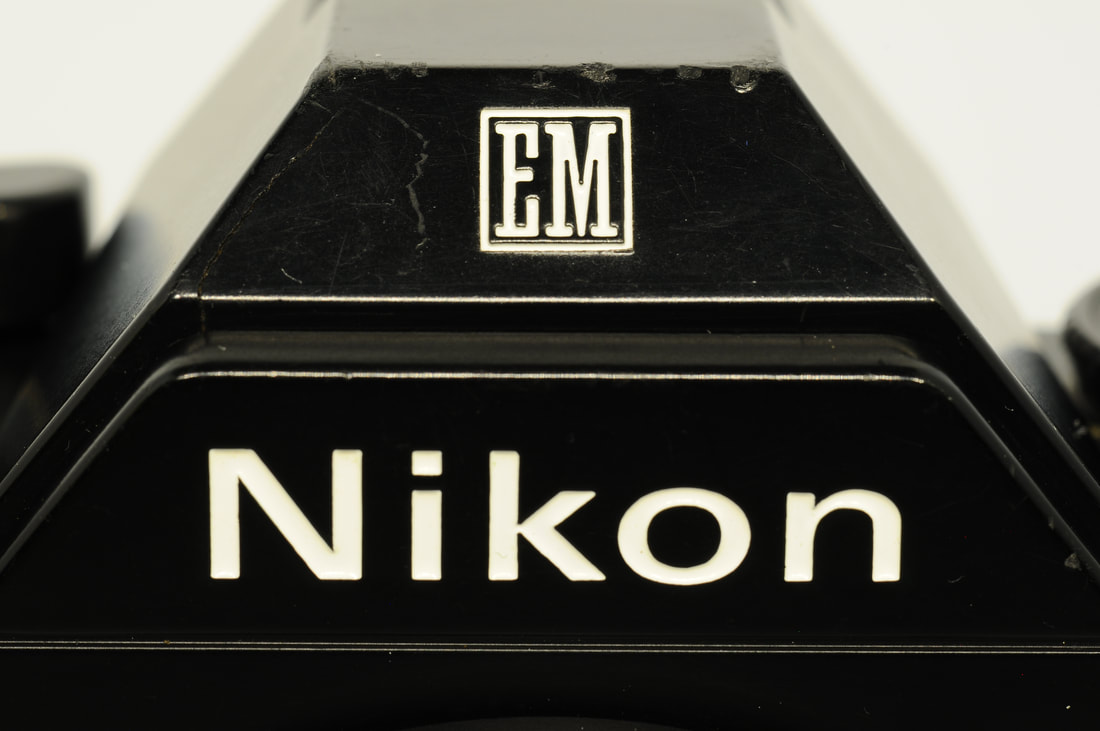
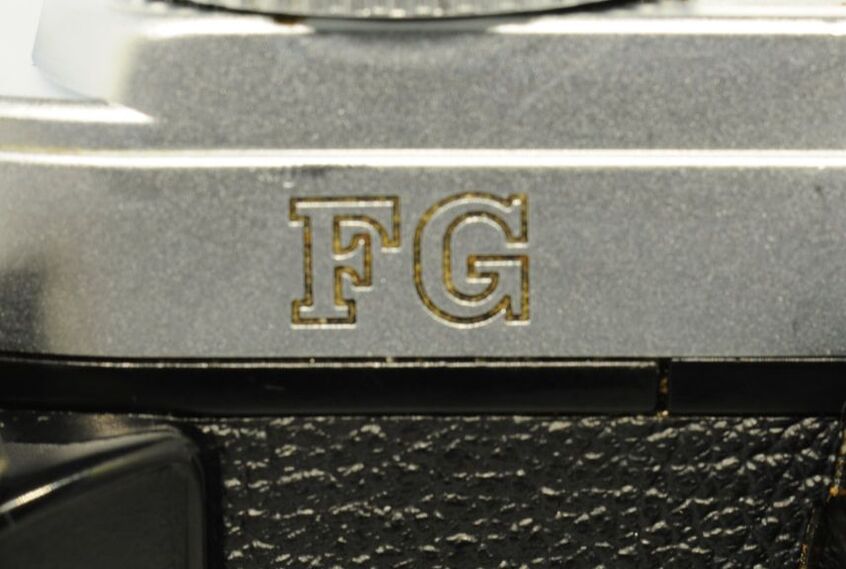
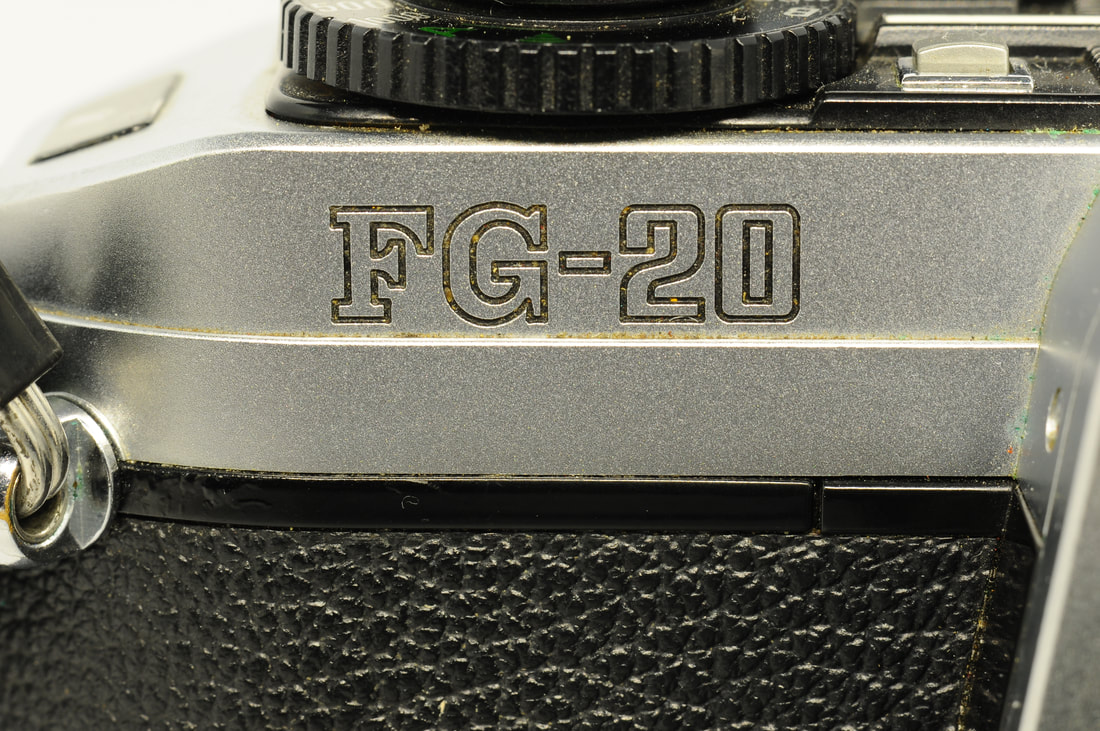
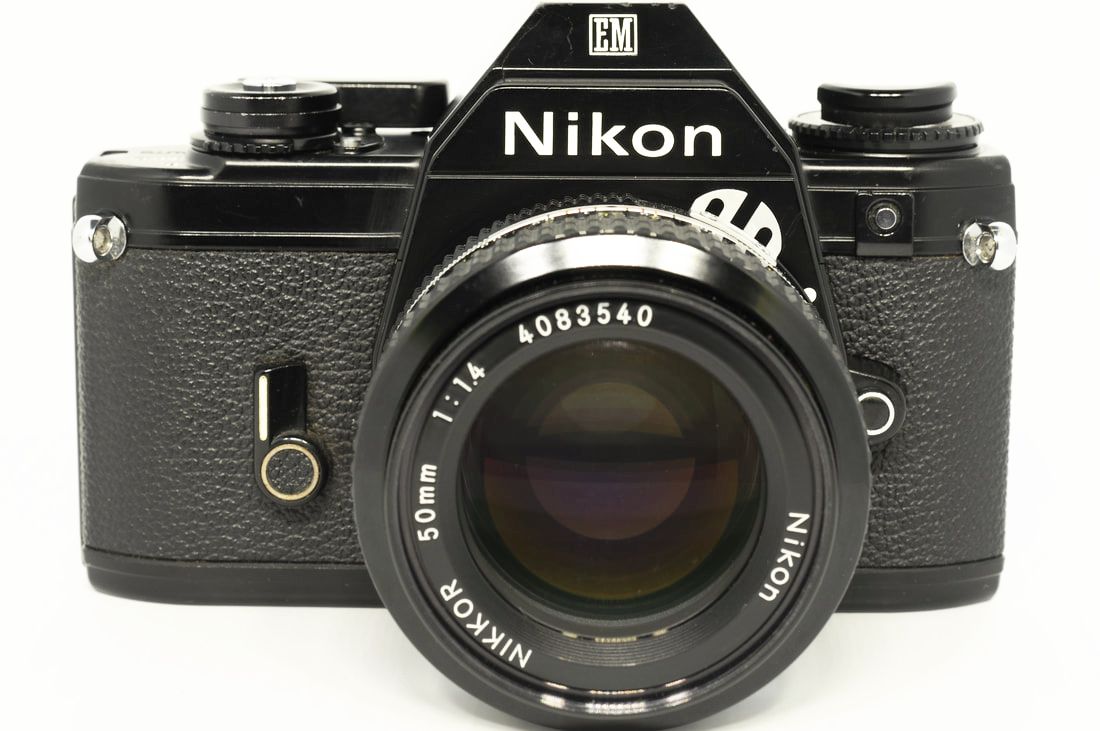

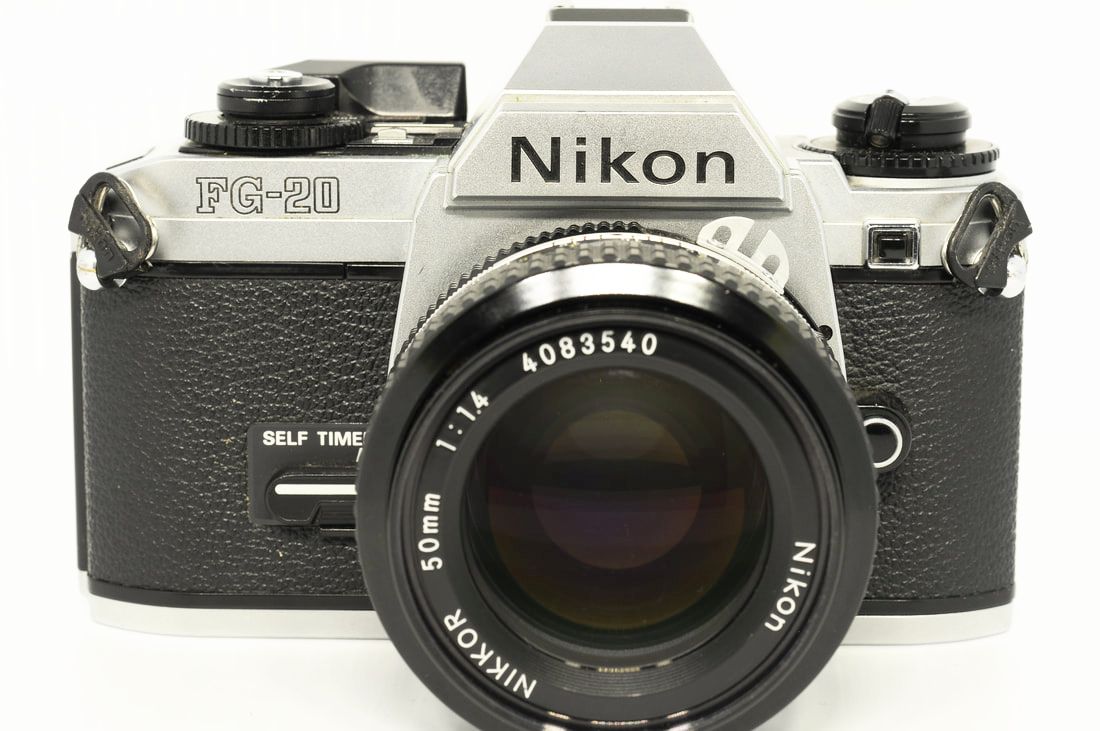
 RSS Feed
RSS Feed